PEARL S. BUCK
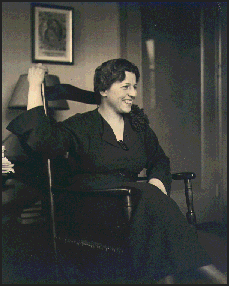 Pearl S. Buck (1892-1973) is an American writer who wrote about China. Even though she won the Pulitzer Prize and the Nobel Prize of Literature (1938) she has been dismissed by William Faulkner and others as a literary lightweight. Her selection for the Nobel prize is sometimes given as evidence of the poor judgment of the Swedish Academy in choosing the prize.
Pearl S. Buck (1892-1973) is an American writer who wrote about China. Even though she won the Pulitzer Prize and the Nobel Prize of Literature (1938) she has been dismissed by William Faulkner and others as a literary lightweight. Her selection for the Nobel prize is sometimes given as evidence of the poor judgment of the Swedish Academy in choosing the prize.
Pearl S. Buck won the first Nobel Prize for Literature ever awarded to an American woman. She had a huge following among American women (men often tended to regard her as too self righteousness). During the middle of the 20th century, the impression that most Americans had of China came from “The Good Earth”, a 1931 novel by Buck set China's Anhui Province.
Pearl S. Buck biographer Hilary Spurling claims that Buck had a “magic power — possessed by all truly phenomenal best-selling authors — to tap directly into currents of memory and dream secreted deep within the popular imagination.” According to to NPR Spurling succeeds in making Buck herself a compelling figure, transforming her from dreary “lady author” into woman warrior.
According to Maureen Corrigan of NPR, “From her earliest days, she was much more than a cultural tourist. She roamed freely around the Chinese countryside, where she would often come upon the remains of abandoned baby girls, left for the village dogs, and she would bury them. Buck's first language was everyday Chinese, and she grew up listening to village gossip and reading Chinese popular novels, like The Dream of The Red Chamber, which were considered sensational by intellectuals, as her own later novels would be.” [Source: Maureen Corrigan, NPR, July 1, 2010]
See Separate Articles: CULTURE AND LITERATURE factsanddetails.com; MODERN CHINESE LITERATURE factsanddetails.com ; LU XUN: HIS LIFE AND WORKS factsanddetails.com ; LAO SHE factsanddetails.com ; EILEEN CHANG factsanddetails.com ; PEARL S. BUCK factsanddetails.com ; WESTERN BOOKS ABOUT CHINA factsanddetails.com ; JIN YONG AND CHINESE MARTIAL ARTS FICTION factsanddetails.com ; LITERATURE AND WRITERS DURING THE MAO ERA factsanddetails.com CULTURAL REVOLUTION FILM AND BOOKS factsanddetails.com ; REVOLUTIONARY OPERA AND MAOIST THEATER factsanddetails.com TRADITIONAL STORYTELLING, DIALECTS AND ETHNIC LITERATURE IN CHINA factsanddetails.com ; MING DYNASTY LITERATURE factsanddetails.com ; JOURNEY TO THE WEST factsanddetails.com ; JING PIN MEI, CHINA’S MOST FAMOUS EROTIC NOVEL factsanddetails.com ; DREAM OF THE RED CHAMBER factsanddetails.com ROMANCE OF THE THREE KINGDOMS factsanddetails.com ; BATTLE OF RED CLIFFS factsanddetails.com ; SEX AND LITERATURE IN CHINA factsanddetails.com ; CHINESE OPERA AND THEATER factsanddetails.com ; PEKING OPERA factsanddetails.com
Website University of Pennsylvania english.upenn.edu;
RECOMMENDED BOOKS: “The Good Earth” by Pearl Buck(1931). Amazon.com; “Pearl S. Buck: A Cultural Biography” by Peter Conn Amazon.com; “Pearl Buck in China: Journey to The Good Earth” by Hilary Spurling Amazon.com; “Sons” Book 2 of 3: The Good Earth Trilogy Amazon.com; “The Mother (1931) by Pearl S. Buck Amazon.com; “Letter from Peking: A Novel” by Pearl S. Buck Amazon.com; “Pavilion of Women” by Adam Verner, Pearl S. Buck, et al. Amazon.com
Impact of Pearl S. Buck
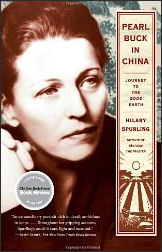
Hua Hsu wrote in The New Yorker: “In the nineteen-thirties, “The Good Earth,” by Pearl S. Buck, was inescapable. The tale of a noble Chinese farmer and his struggles against famine, political upheaval, and personal temptation, the book was an immediate success upon publication, in 1931. Buck was born in West Virginia, but she was raised in rural China, the daughter of American missionaries, and she resisted the sense of Christian superiority many within her circle felt toward the “heathen” Chinese. “When I was in the Chinese world I was Chinese, I spoke Chinese and behaved as a Chinese and ate as the Chinese did, and I shared their thoughts and feelings,” she later recalled. Her sympathetic backstory gave “The Good Earth” a rare kind of authority: it was billed as an authentic tale of a distant, windswept China, but its author was a white American, and it told the kind of story that Americans grappling with the Great Depression and the Dust Bowl wanted to hear — of hard work, perseverance, and triumph in the face of natural disaster and corruption. [Source: Hua Hsu, The New Yorker, July 14, 2016]
“At the time, China, for most Americans, was a wondrous abstraction, an inscrutable assemblage of four hundred million future Christians, consumers, or citizens, depending on your game. Promise on this scale required experts and explainers; it required prophets. “The Good Earth,” and its Academy Award-winning 1937 film adaptation, established Buck as one of America’s most prominent voices on all things Chinese, an informal position she would hold for decades. She nurtured her authority within this world with care, becoming an outspoken advocate for China’s poor and producing a remarkably steady output of novels and reportage. She also used her fame to promote the work of others, through her publisher, the John Day Company, which began prioritizing books about Asia after Buck’s pathbreaking success.
Buck was unpopular with both the left and the right. The FBI classified her as a Communist sympathizer and kept a file on her that ran in the hundreds of pages. The Communists called her a "running dog of capitalism." Her works were banned in China until 1997. In China, Buck was critical of both the Nationalists and the Communists. She compared Communists to that of her father and his missionary colleagues. Writing in 1954 about a meeting with a Chinese communist woman, Buck said: “And in her words, too, I caught the old stink of condescension.”
Pearl S. Buck's Early Life
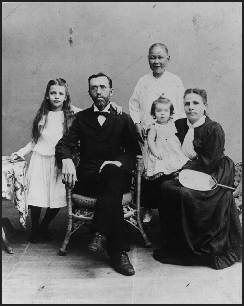
Pearl Buck's family
The second of three children, Buck was born into a missionary family in West Virginia and moved to China when she was three months old. Her father was a cold Presbyterian fundamentalist who spent most of his time translating the Bible into Chinese and preaching to peasants. Her mother lost several children and spent most her life longing to return home and, by the end of her life, hated her husband so much she refused to see him or listen to his Christian "consolations" on her deathbed.
“Buck's father, Absalom, was often away, traveling over his mission field (an area as big as Texas), preaching blood-and-thunder sermons to often hostile Chinese passersby. After the first “ten years he had spent in China,” Spurling tells us, “[Absalom] had made, by his own reckoning, ten converts.” The young Buck and her family lived at subsistence level in houses that were little more than shacks and apartments on streets thronged with bars and bordellos. They managed to survive the Boxer Rebellion and the subsequent violence that heralded the advance of the Chinese Nationalists.”
Buck spent much of her youth in a small house overlooking the Yangtze River and learned to speak fluent Chinese. Her nurse told her stories of tree spirits, dragons, Taoists mystics and magic while her mother reminisced about West Virginia. At an early age Pearl wrote things that struck her in the Shanghai Mercury.
Pearl S. Buck’s Childhood in Rural China
In her biography “Pearl Buck in China: Journey to The Good Earth” Hilary Spurling wrote: “Pearl Sydenstricker was born into a family of ghosts. She was the fifth of seven children and, when she looked back afterward at her beginnings, she remembered a crowd of brothers and sisters at home, tagging after their mother, listening to her sing, and begging her to tell stories...The siblings who surrounded Pearl in these early memories were dreamlike as well. Her older sisters, Maude and Edith, and her brother Arthur had all died young in the course of six years from dysentery, cholera, and malaria, respectively. Edgar, the oldest, ten years of age when Pearl was born, stayed long enough to teach her to walk, but a year or two later he was gone too (sent back to be educated in the United States, he would be a young man of twenty before his sister saw him again). He left behind a new baby brother to take his place, and when she needed company of her own age, Pearl peopled the house with her dead siblings. “These three who came before I was born, and went away too soon, somehow seemed alive to me,” she said.” [Source:”Pearl Buck in China: Journey to The Good Earth” by Hilary Spurling (Simon & Schuster, 2010)]
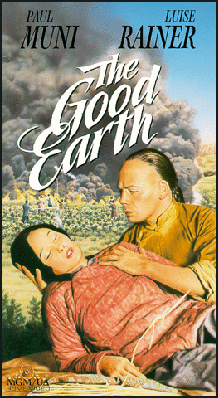
film version of The Good Earth “Every Chinese family had its own quarrelsome, mischievous ghosts who could be appealed to, appeased, or comforted with paper people, houses, and toys. As a small child lying awake in bed at night, Pearl grew up listening to the cries of women on the street outside calling back the spirits of their dead or dying babies. In some ways she herself was more Chinese than American. “I spoke Chinese first, and more easily,” she said. “If America was for dreaming about, the world in which I lived was Asia. I did not consider myself a white person in those days.” Her friends called her Zhenzhu (Chinese for Pearl) and treated her as one of themselves. She slipped in and out of their houses, listening to their mothers and aunts talk so frankly and in such detail about their problems that Pearl sometimes felt it was her missionary parents, not herself, who needed protecting from the realities of death, sex, and violence.”
"She was an enthusiastic participant in local funerals on the hill outside the walled compound of her parents' house: large, noisy, convivial affairs where everyone had a good time. Pearl joined in as soon as the party got going with people killing cocks, burning paper money, and gossiping about foreigners making malaria pills out of babies' eyes. “'everything you say is lies,' I remarked pleasantly. There was always a moment of stunned silence. Did they or did they not understand what I had said? they asked each other. They understood, but could not believe they had.” The unexpected apparition of a small American girl squatting in the grass and talking intelligibly, unlike other Westerners, seemed magical, if not demonic. Once an old woman shrieked aloud, convinced she was about to die now that she could understand the language of foreign devils. Pearl made the most of the effect she produced, and of the endless questions — about her clothes, her coloring, her parents, the way they lived and the food they ate — that followed as soon as the mourners got over their shock. She said she first realized there was something wrong with her at New Year 1897, when she was four and a half years old, with blue eyes and thick yellow hair that had grown too long to fit inside a new red cap trimmed with gold Buddhas. “Why must we hide it?” she asked her Chinese nurse, who explained that black was the only normal color for hair and eyes. (“It doesn't look human, this hair.”)” [Ibid]
“Pearl escaped through the back gate to run free on the grasslands thickly dotted with tall pointed graves behind the house. She and her companions, real or imaginary, climbed up and slid down the grave mounds or flew paper kites from the top. “Here in the green shadowswe played jungles one day and housekeeping the next.” She was baffled by a newly arrived American, one of her parents' visitors, who complained that the Sydenstrickers lived in a graveyard. (“That huge empire is one mighty cemetery,” Mark Twain wrote of China, “ridged and wrinkled from its center to its circumference with graves.”) Ancestors and their coffins were part of the landscape of Pearl's childhood. The big heavy wooden coffins that stood ready for their occupants in her friends' houses, or lay awaiting burial for weeks or months in the fields and along the canal banks, were a source of pride and satisfaction to farmers whose families had for centuries poured their sweat, their waste, and their dead bodies back into the same patch of soil.” [Ibid]
‘sometimes Pearl found bones lying in the grass, fragments of limbs, mutilated hands, once a head and shoulder with parts of an arm still attached. They were so tiny she knew they belonged to dead babies, nearly always girls suffocated or strangled at birth and left out for dogs to devour. It never occurred to her to say anything to anybody. Instead she controlled her revulsion and buried what she found according to rites of her own invention, poking the grim shreds and scraps into cracks in existing graves or scratching new ones out of the ground. Where other little girls constructed mud pies, Pearl made miniature grave mounds, patting down the sides and decorating them with flowers or pebbles. She carried a string bag for collecting human remains, and a sharpened stick or a club made from split bamboo with a stone fixed into it to drive the dogs away. She could never tell her mother why she hated packs of scavenging dogs, any more than she could explain her compulsion, acquired early from Chinese friends, to run away and hide whenever she saw a soldier coming down the road.”
“Soldiers from the hill fort with earthen ramparts above the town were generally indistinguishable from bandits, who lived by rape and plunder. The local warlords who ruled China largely unchecked by a weak central government were always eager to extend or consolidate territory. Severed heads were still stuck up on the gates of walled towns like Zhenjiang, where the Sydenstrickers lived. Life in the countryside was not essentially different from the history plays Pearl saw performed in temple courtyards by bands of traveling actors, or the stories she heard from professional storytellers and anyone else she could persuade to tell them. The Sydenstrickers' cook, who had the mobile features and expressive body language of a Chinese Fred Astaire, entertained the gateman, the amah, and Pearl herself with episodes from a small private library of books only he knew how to read. This was her first introduction to the old Chinese novels — The White Snake, The Dream of the Red Chamber, All Men Are Brothers — that she would draw on long afterward for the narrative grip, strong plot lines, and stylized characterizations of her own fiction.”
Book: “Pearl Buck in China: Journey to The Good Earth” by Hilary Spurling (Simon & Schuster, 2010). Spurling is an award-winning biographer. The book It focuses almost exclusively on Buck's Chinese childhood.
Pearl S. Buck's Later Life
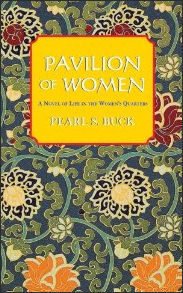
Buck traveled widely around China and elsewhere in the world. She even took the Trans Siberian Railway across the Soviet Union shortly after it was completed to attend college in the United States.
By the time she arrived as a charity student at Randolph-Macon Women's College in Virginia, Buck was indelibly alienated from her American counterparts. “Girls came in groups to stare at me,” wrote Buck, remembering her first harsh college days some 50 years later. She was set apart not only by her out-of-date clothes made by a Chinese tailor, but also by her extraordinary life experiences, which encompassed firsthand knowledge of war, infanticide and sexual slavery....As Spurling deftly illustrates, that alienation gave Buck her stance as a writer, gracing her with the outsider vision needed to interpret one world to another.
In the United States Buck married to an agronomist, who took her back to China. Their only child was mentally handicapped. While her husband told Chinese peasant farmers how to grow crops with American technology and fertilizer they couldn't afford and wasn't practical in China anyway, Buck stayed home and wrote.
In midlife, as a famous novelist, she made enemies criticizing the racism of the mission movement; she also shocked contemporaries by writing in her memoir, The Child Who Never Grew, about her brain-damaged daughter Carol, at a time when such children were quietly institutionalized and publicly forgotten.
Buck’s husband reportedly had numerous affairs with Chinese women, and she left him and returned to America and married her publisher after she earned enough money from her novels. She and her new husband adopted four children. She died in 1973 at the age of 80.
Pearl Buck's Books

Buck’s books include “East Wind, West Wind” (1930), her first novel; “The Good Earth”, her most famous novel; “The Child Who Never Grows”, about her handicapped child; and “My Several Worlds” (1954). She wrote several historical novels under the pseudonym John Sedges.
“The Good Earth” won Buck a Pulitzer Prize. It was made into a film that won two Academy Awards: Best Actress (Luise Rainer) and Best Cinematography (Karl Freund). It was nominated for five Oscars, including Best Picture, Best Director and Best Film Editiing. “The Pavilion of Women” was made into a film in the early 2000s with Willem Dafaoe and Chinese actress Luo Yan.
In addition to writing a whole slew of books about the Chinese, Pearl S. Buck also spoke out on women's right, racial equality and the plight of Amerasian children abandoned by their American military fathers. Buck's domestic novels defied the mores of her time by depicting sexual despair and physical revulsion within marriage.
Image Sources: Amazon, Pearl Buck website, Wiki Commons
Text Sources: New York Times, Washington Post, Los Angeles Times, Times of London, National Geographic, The New Yorker, Time, Newsweek, Reuters, AP, Lonely Planet Guides, Compton’s Encyclopedia and various books and other publications.
Last updated October 2021
